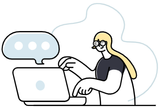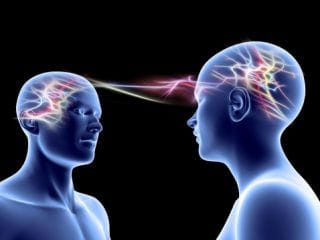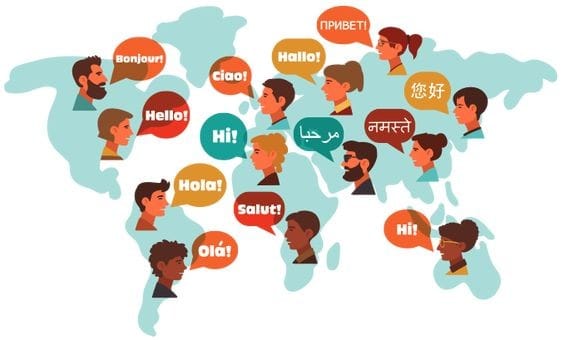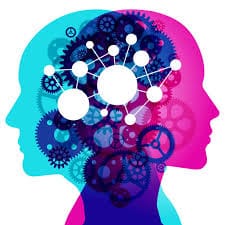From Chaos to Clarity: How Modern Journalling Transforms Scattered Thoughts into Inner Peace

In an age where our minds are constantly bombarded with information, notifications, and endless digital noise, finding inner peace and mental clarity has become more challenging than ever. Yet, an ancient practice combined with modern technology offers a powerful solution: journalling and mindful sharing of our thoughts. This practice, whether through traditional pen and paper or digital platforms, has proven to be a remarkable tool for achieving mental clarity and emotional balance.
The Science Behind Journalling
Research published in the Journal of Experimental Psychology demonstrates that writing about our thoughts and feelings can significantly reduce mental clutter and improve cognitive performance. Dr. James Pennebaker, in his groundbreaking book "Writing to Heal," reveals how expressive writing can enhance both mental and physical health. The simple act of transferring our thoughts from mind to paper creates what psychologists call a "cognitive offloading" effect, freeing up mental resources for clearer thinking and decision-making.
The hit Netflix series "The Mind, Explained" dedicates an entire episode to how our brains process and store information, highlighting how writing serves as an external memory system that helps organise our thoughts. This scientific backing gives credence to what many successful individuals have known intuitively - journalling works.
The Digital Revolution of Personal Reflection
While traditional journalling remains powerful, digital platforms have revolutionised how we document and share our thoughts. The bestselling author Austin Kleon, in his book "Show Your Work," emphasises how sharing our journey and thoughts can create meaningful connections and foster personal growth. Digital journalling platforms like Sharings.Me have taken this concept further by creating safe spaces where individuals can both self-reflect and optionally share their insights with a supportive community.
The Power of Structured Reflection
Popular blogger Mark Manson, author of "The Subtle Art of Not Giving a F*ck," often writes about the importance of structured reflection in maintaining mental clarity. A journal, whether physical or digital, provides this structure. Consider these proven techniques:
- Morning Pages: Popularised by Julia Cameron in "The Artist's Way," this practice involves writing three pages of stream-of-consciousness thoughts each morning.
- Gratitude Logging: Research published in Positive Psychology shows that regularly recording things we're grateful for can significantly improve mental well-being.
- Problem-Solving Entries: Using your journal to break down complex problems into manageable pieces, a technique endorsed by productivity expert David Allen in "Getting Things Done."
The Sharing Component
What makes modern journalling particularly powerful is the option to share selected thoughts with others. The award-winning documentary "The Social Dilemma" highlights the downsides of social media, but platforms specifically designed for thoughtful sharing offer a different experience. When we share our reflections in a supportive environment, several benefits emerge:
- Validation of our experiences
- Connection with like-minded individuals
- Opportunity to help others through our insights
- Accountability in our personal growth journey
Finding Peace Through Process
The popular mindfulness app Headspace frequently references journalling in its content, describing it as a form of meditation through writing. This concept is supported by research published in the Journal of Mental Health, which shows that regular journalling can reduce anxiety and improve emotional regulation.
Whether you're dealing with:
- Work-related stress
- Personal relationships
- Life transitions
- Creative blocks
- Emotional challenges
A consistent journalling practice provides a reliable framework for processing these experiences and finding clarity.
Digital vs. Physical: Finding Your Path
While some prefer the tactile experience of writing in a physical journal, as advocated by productivity expert Tim Ferriss in his blog, others find digital journalling more practical and accessible. The key is finding what works for you. Digital platforms offer unique advantages:
- Searchability of past entries
- Easy organisation and tagging
- Access from any device
- Option to include multimedia elements
- Ability to share selected entries with a supportive community
The Community Aspect
The Harvard Business Review recently published an article about the power of community in personal development. When we journal in isolation, we miss out on the collective wisdom and support that a community can provide. This is where platforms like Sharings.Me bridge the gap between private reflection and communal growth.
Making It Work for You
Start small. Begin with five minutes of daily journalling. Whether you choose a leather-bound notebook or a digital platform, consistency matters more than format. As author Gretchen Rubin notes in "Better Than Before," the key to forming any habit is making it convenient and enjoyable.
Join Our Community
Ready to experience the transformative power of journalling and mindful sharing? Join our growing community at Sharings.Me, where thousands of individuals are discovering the peace and focus that comes from structured reflection and selective sharing. Our platform provides both private journalling spaces and opportunities to connect with others on similar journeys.
Your thoughts deserve a home, and your insights could help others find their path to clarity. Start your journalling journey today at Sharings.Me and join a community dedicated to personal growth through thoughtful reflection and sharing.
Remember, every great journey begins with a single step - or in this case, a single word written in your journal. The path to mental clarity and peace awaits.




